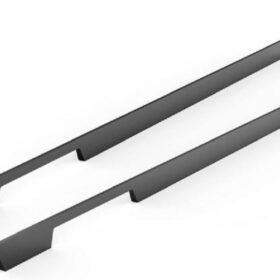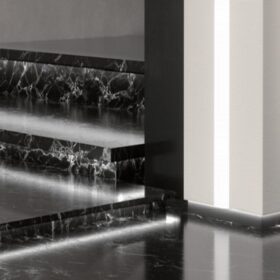Enhancing Kitchen Efficiency with Ergonomic Counter Handles
In the realm of kitchen design, efficiency and ergonomics go hand in hand. One crucial aspect that often overlooked is the humble counter handle. By incorporating ergonomic design principles into counter handles, kitchens can be transformed into spaces that maximize comfort, reduce fatigue, and ultimately enhance efficiency.
Benefits of Ergonomic Counter Handles
Ergonomic counter handles offer a multitude of benefits for kitchen users. They:
Reduce Muscle Strain:
Traditional counter handles can put strain on the wrists, elbows, and shoulders. Ergonomic handles, on the other hand, are designed to conform to the natural contours of the hand, minimizing muscle strain and discomfort.
Improve Grip:
The shape and material of ergonomic handles provide a secure and comfortable grip, allowing for precise control when pulling or pushing drawers and cabinets.
Promote Proper Posture:
By encouraging a neutral wrist and arm position, ergonomic handles reduce the risk of developing musculoskeletal disorders such as carpal tunnel syndrome.
Design Features of Ergonomic Counter Handles
Ergonomic counter handles are typically characterized by several key design features:
Deep Contouring:
The handles are sculpted to fit the shape of the hand, providing maximum support and minimizing pressure points.
Soft Touch Materials:
Handles made of rubber, silicone, or other soft materials offer a comfortable and non-slip grip.
Anti-Microbial Properties:
Antimicrobial finishes prevent the spread of bacteria and germs, ensuring hygiene and safety in the kitchen.
Easy Cleaning:
Ergonomic handles are designed to be easily cleaned and sanitized, reducing maintenance time and effort.
Applications in Kitchen Design
Ergonomic counter handles can be incorporated into a wide range of kitchen designs. They are particularly beneficial in:
High-Traffic Kitchens:
In kitchens with heavy usage, ergonomic handles can significantly reduce fatigue and strain for frequent users.
Accessible Kitchens:
For individuals with limited mobility or hand dexterity, ergonomic handles provide a more accessible and inclusive cooking environment.
Commercial Kitchens:
Commercial kitchens with multiple cooks working simultaneously can benefit from ergonomic handles to minimize musculoskeletal issues.
Conclusion
By embracing ergonomic principles in counter handle design, kitchens can be transformed into more efficient and comfortable spaces. Ergonomic counter handles reduce muscle strain, improve grip, promote proper posture, and enhance overall kitchen functionality. Whether in residential or commercial settings, investing in ergonomic counter handles is an investment in the well-being and productivity of those who use the kitchen.
-
2024-11-29Top Trends in Modern Kitchen Cabinet Pulls for 2024
-
2024-11-28The Ultimate Guide to Modern Kitchen Cabinet Pulls- Materials, Styles, and Tips
-
2024-11-27Elevate Your Kitchen Design with These Must-Have Modern Cabinet Pulls
-
2024-11-26Sleek and Stylish- The Best Modern Kitchen Cabinet Pulls for a Contemporary Look










